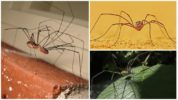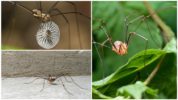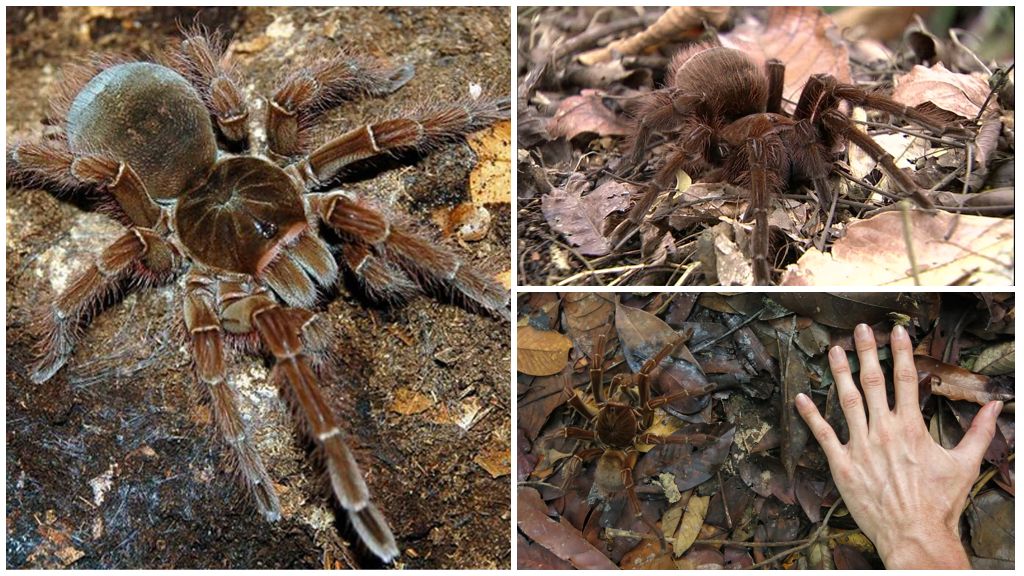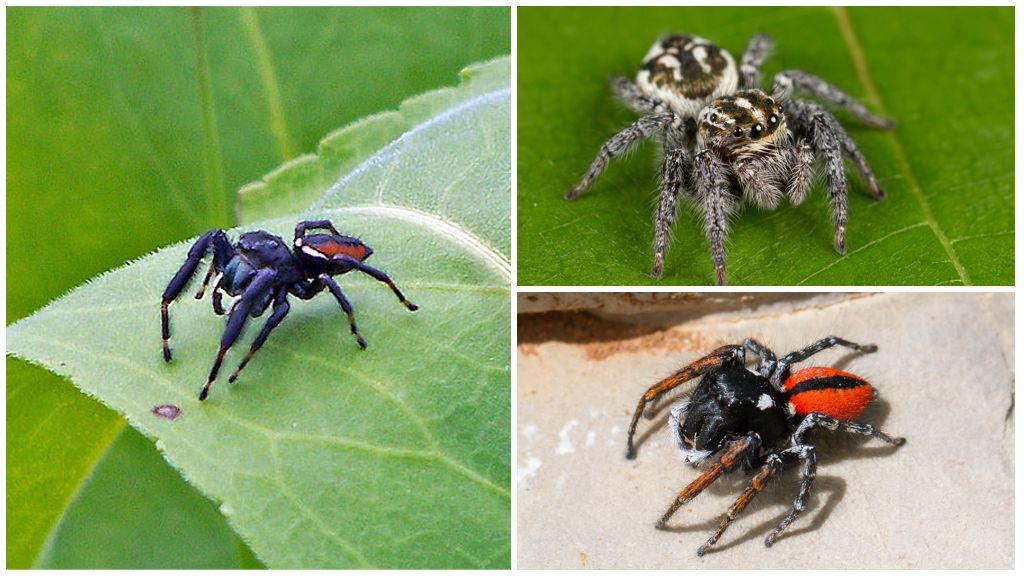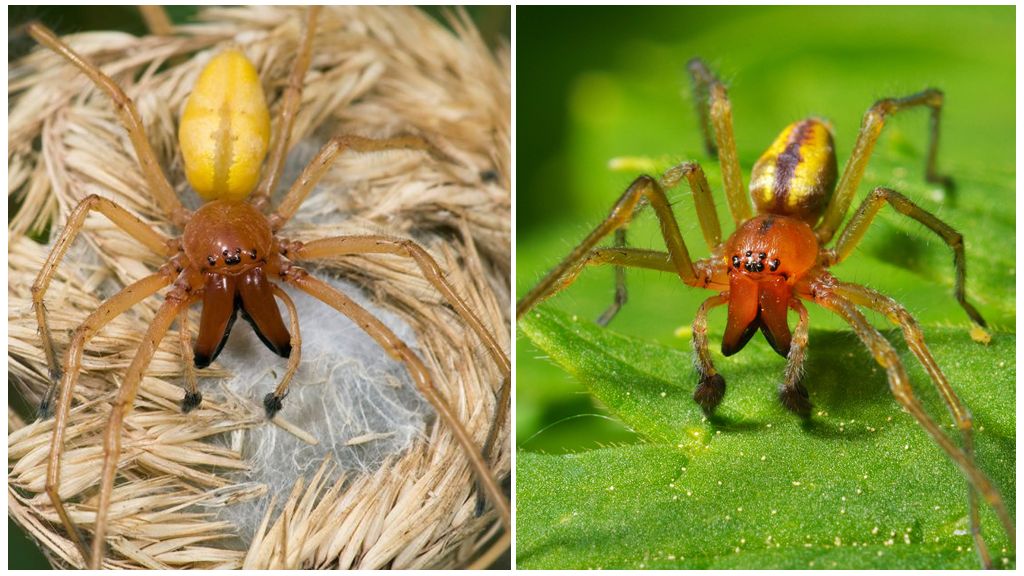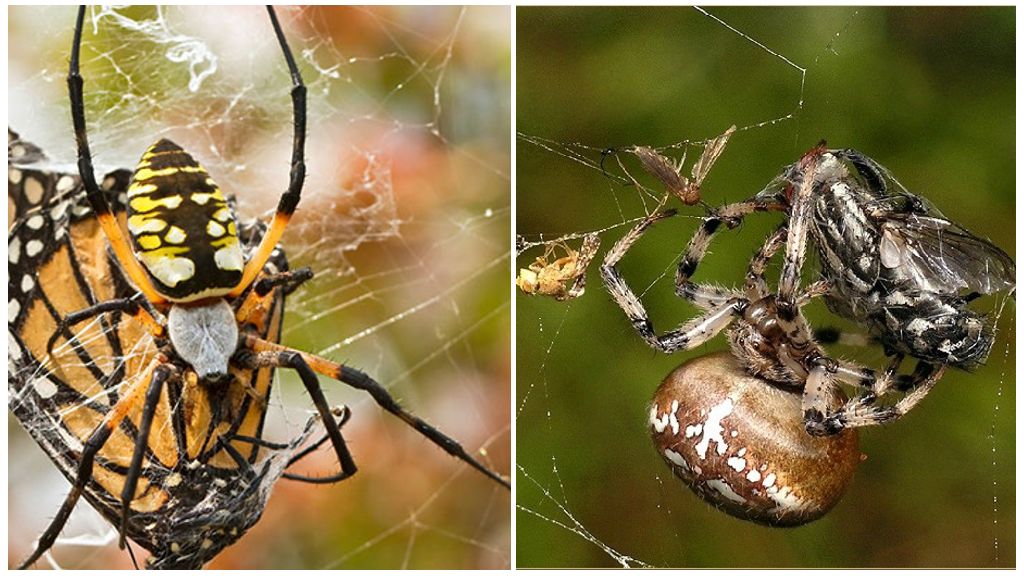- Spider haymaker
- Spider haymaker
The spider is a haymaker, he is a centipede; More than 6 thousand species of representatives of this family are known. They differ in size, length of legs, colors. The most diverse species live in tropical countries. The synanthropic spider, the rhino, lives in a person’s house, outbuildings, abandoned rooms, warehouses, barns, and other buildings. On Russian territory 60 species of hayfields are found.
Appearance description
The spider centipede, which lives in our area, reaches a body size of 2-10 mm. At the largest representative, the abdomen is 22 mm. The length of the legs is comparable with the dimensions of the body or several times more. The most common rhino spider is the owner of legs that are 20 times longer than the body - up to 16 cm.
Unlike others species of spiders the abdomen with the chest is connected by a wide jumper, practically merges together. While many spiders have a thin "waist". The body is in most cases oval. When the soil heats up very strongly, long surfaces raise the body high to avoid overheating.
On a note!
The color is the most diverse. Mowers, leading a nocturnal lifestyle, black, gray, brown, red. The dayskin has a brighter color - orange, red, with patterns, spots. The long-legged spider in the house is gray-brown in color with almost transparent limbs.
On the head the spider has 6-8 eyesbut sees the animal very poorly. The organs of touch, smell are placed on the feet. This is the main organ connecting the haymaker with the outside world. The long-legged spider feels the slightest fluctuations in air, vibration, smells. You can carefully consider the structural features of the arthropod in the photo of the haying spider, located further down.
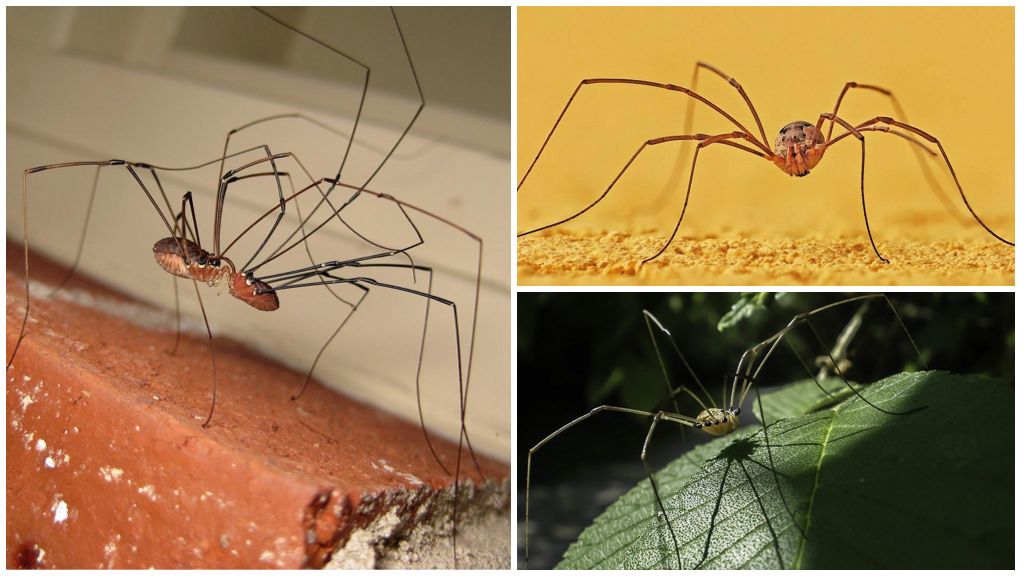
origin of name
The insect with long legs, similar to a spider, has several names.
- Arthropod paws easily come off, the damaged area is quickly dragged on without causing harm. The leg continues for some time to make movements that resemble a scythe during haymaking. This is where the name came from - a rhino, a haymower, a spider squinted, a goat leg. The paw attracts the attention of the enemy while the spider escapes. The natural enemies are other arachnids, birds.
- The Latin name opiliones literally means "shepherd." Associations arose from long legs resembling stilts. In ancient times, shepherds often used stilts to make it easier to keep track of the herd.
- An American writer called spider opiliones due to mass distribution on pastures.
A haymaker is also called a tick, which has nothing to do with arachnids. According to genetic studies, the DNA of the rhino is more similar to scorpions than to spiders.
Lifestyle, habitat
A spider with long thin legs is ubiquitous. It is found in forests, meadows, fields, near a river, in outbuildings, abandoned buildings, residential buildings. Some species live in deserts, mountains.
In the afternoon, the spider hides in shady places away from direct sunlight. Often found on the walls of a building with legs spread out to the side.
On a note!
At the sight of the enemy, the haymaker flees, develops a sufficiently high speed. Home spider in the afternoon sits in a shaded place - in the corners of the room, in the bathroom, pantry, under the furniture. At night he goes out in search of food.
What do eateries eat
The spider with long legs is a predator. It feeds on small arthropods and insects. Some species of haymakers eat snails, slugs, and also plant foods. Unlike its counterparts, spiders, the eatery eats not only liquid food, but also solid food, eats the whole victim. Jaws, front legs help to grind. With a lack of basic food, the haymaker eats plants, bird droppings, carrion, mushrooms. Some long-legged knee-high boots lead a daily lifestyle, and rest at night.
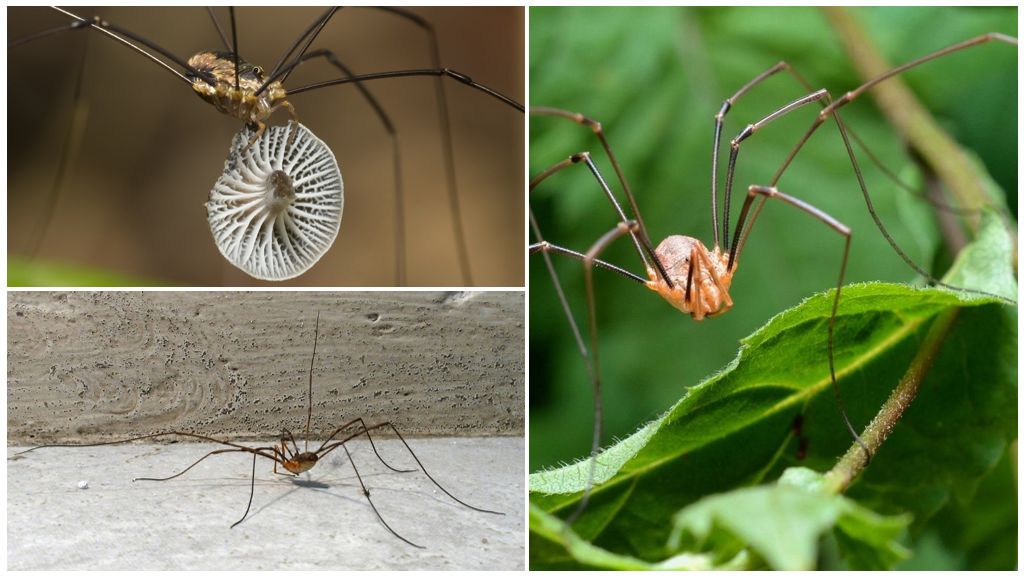
The spider glands are poorly developed or absent altogether. In a messy web the victim gets confused in a few seconds. The haymaker injects poison, paralyzing the prey, then calmly eats it.
Breeding
The mating season lasts from early July to late August. The method of fertilization is internal, more like insects. A fertilized female lays eggs in the soil. Reproduces up to 600 pieces at a time. The young generation, the eggs, remains to winter. One population appears in a year, rarely two. Spider lives no more than 2 years.
Cubs are not much different from adults. A spider with a small body, with large paws. The growing up period lasts several days. Sheds a young haymaker 7 times. Gradually increases in size, acquires a darker color. At the last stage of development, puberty begins.
Interesting!
Mating games do not occur, but fights between males occur quite often. Males have a maternal instinct - they protect egg clutches from females capable of devouring cubs.
The haymaker is poisonous or not
A spider with a round body, long legs is often found in a living room. The question naturally arises - is it poisonous or not. The haymaker injects the toxic substance into the victim’s body during a bite. The poison paralyzes the muscles, immobilizes the prey, allowing the rhino to calmly make a meal.
The poison is not dangerous to humans. Experts say that the haymaker does not bite at all. In a life-threatening situation, flees, even sometimes sacrifices his limbs. The attack does not rush. The presence of an arachnid in the house is unpleasant, irritates the nervous system, and can scare a child or a person suffering arachnophobia. There is no other harm from the cut-off.
To get rid of the haymaker in the house, it is necessary to clean, walk with a broom in the corners, behind the furniture, remove garbage, deposits of paper, rags, things. And also get rid of flies, cockroaches, antsthat act as food for the cutlery in the house. Apply poison to rid of spiders no need.
